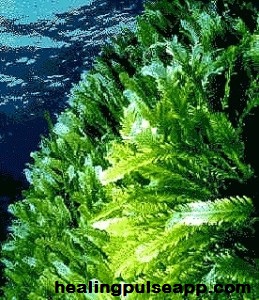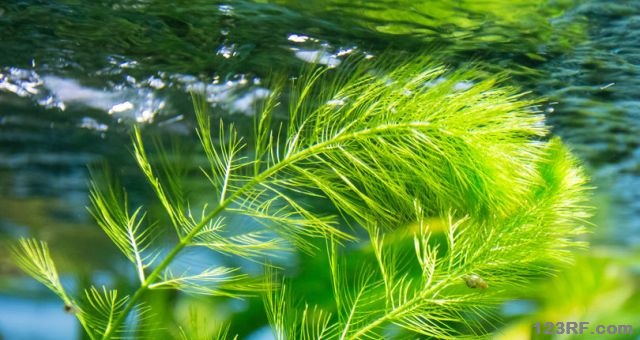Alga, or the plural algae, is the latest breakthrough in the biofuel world. If our economy crashes or we experience an event that changes life as we know it (an EMP, for instance), fossil-based fuels may not be readily available to us.
That leaves three choices: walk, ride a horse, or find another way to fuel our vehicles. Since walking is pretty inefficient on long distances and horses aren’t an option for most people, finding a sustainable source of fuel will be paramount.
Today we’re going to talk about making fuel from algae. Before we begin, you need to know that this isn’t the easiest of processes because it involves extracting the oil from the plant. That does, of course, apply to any crop that you’re going to grow yourself for biofuel.
You’re going to need to invest some money into equipment and chemicals. You’re also going to need to invest some time into practicing and learning the exact process. Already-pressed oil is much simpler, but of course that may not be available if SHTF.
Choosing the Best Algae for Biofuel
The reason that alga is being considered the possible biofuel of the future is because some species yield up to 60% of their biomass in lipids, aka oil. To put that in perspective, corn yields about 18 gallons of oil per acre, sunflowers yield 102 gallons and micro algae yields 5000-15,000 gallons.
Also, algae can be grown on ponds and swamps that don’t compete with food crops. Significant difference, yes?
There are a ton of different types of algae on our planet but some are much more suited for biofuel than others. You want to find one that’s easy to grow, produces a high percentage of oil, and reproduces relatively quickly.
 Chlorella is fairly popular among growers because it has a rapid growth rate and grows well in a pond setting.
Chlorella is fairly popular among growers because it has a rapid growth rate and grows well in a pond setting.
It’s green algae that can be packaged for food after the oil is extracted so there’s no waste and it is multi-use.
About 29% of its dry weight is oil.
Because different types of algae thrive in different climates, you should choose based upon what you can grow and use the best.
Growing Algae for Biofuel
How you grow your algae will depend largely upon what type you grow, but there several different common ways. The standard ingredients that you’ll generally need are simply hydrogen, nutrients for your specific algae, water, and sunlight.
As algae have a harvesting cycle of about 1-10 days, you can grow a lot in a very short period of time. You can also harvest up to 90% of the crop without damaging your future yields.
There are a few different ways for you to grow algae for biofuel. They include:
- Open ponds. Though this may seem to be the easiest, most natural way, it poses some challenges. If your strain of algae isn’t hardy, it could be wiped out by poor weather, fluctuations in pH, or invasive algae or bacteria. Also, strains with higher lipid content grow much slower in an open pond environment depending upon these challenges.
- Closed-Loop Systems. These systems consist of a network of clear plastic bags or tubing exposed to artificial light or sunlight but not exposed to air. This prevents contamination from bacteria or other elements but requires that sterile CO2 be pumped through, as the system isn’t exposed to air.
- Photobioreactors. This is a method that uses a system of hoses or bottles that have water circulated through them and are exposed to light. The algae may also be grown in a container that’s completely opaque and enclosed indoors, with light being pumped into it. That’s an expensive, industrial way to do it though, and is outside the scope of the DIY’er. Again, you’ll need to pump CO2 through it in order to control the growth of your algae. This can be done using a bubbler similar to what you use to aerate a fish tank. There are currently systems that use gravity, which is great because they don’t require power. The problem with this process is that it’s in its infancy and an effective model hasn’t really been tested yet.
- Ultrasonic Extraction. This method involves the use of ultrasonic waves to crack the algae molecules in order to separate the biomass from the oil. Not really an at-home type of thing yet.
It seems to us that the best way to grow your own algae at home in a survival situation is to either use the photobioreactor system using plastic tubing or bottles, or use the open pond system.
To get either system started, you simply add the nutrients and algae starts to the water. With the bioreactor, you’ll start circulating the water and with the pond, you just let it go.
Extracting Oil from Algae for Biofuel
The next step, after you gather your algae from the source, is to dry it thoroughly if you’re going to use a mechanical press to extract the oil. If you’re using chemical methods, this isn’t as necessary.
There are dryers made specifically for this, but since we’re operating on the premise that there will be no power, you can dry it in the sun. Let it dry completely; water in your diesel is a bad thing and good preparation here will save you work later.
Once the algae are dry, it’s time to extract the oil. If you just want to press it out without using chemicals, you can use a large press purchased specifically for this, or you can use a smaller home press. For detailed directions, check out our article, How to Make Your Own Vegetable Oil, as algae oil is a type of vegetable oil.
The most effective way to extract the most oil from algae is by using a combination of manual and physical techniques. Use a press (screw, expeller or piston, depending upon your algae type) to get most of the oil out, then add a hexane solution to get the rest. Distill it or allow it to settle, then drain the oil from the bottom just like you do when processing vegetable oil.
To turn your algae oil into biofuel, you need to put it through a process called transesterification. This is a pretty detailed process that we discuss this great length in our article, How to Make Oil at Home for Biodiesel.
Growing algae is certainly a viable method of producing oil for biofuel that can be used to operate vehicles and machinery, to cook with, and to illuminate and heat our homes in a post SHTF world. For that matter, it’s a fabulous alternative to fossil fuels in the world as we know it. Research continues and as scientists learn more, better techniques for growing and harvesting algae will be discovered.
If you have any questions about making biofuel from algae, or if you’ve done it already, please feel free to tell us about your ideas or experience in the comments section below.
This article has been written by Theresa Crouse for Survivopedia.






